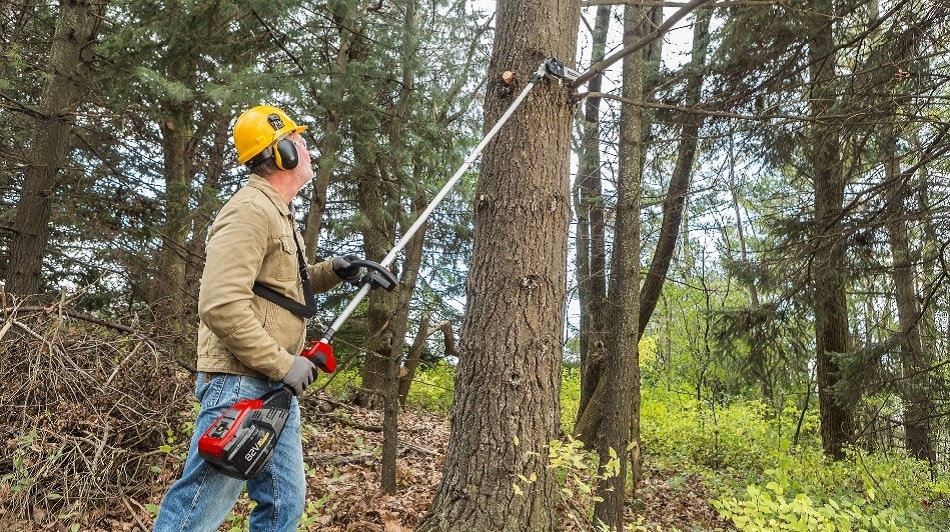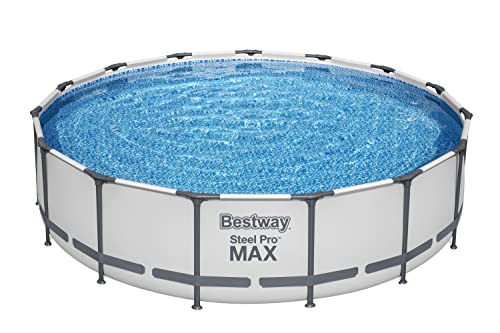How To Trim large trees Safely – In-depth Guides | Backyardlord

Trimming trees is not an easy task to do. More often than not, you need to prune or trim trees due to many reasons. When dealing with the pruning of trees, you should be especially careful not to damage the bark or to interfere with the standard tree recovery process.
In this post, we will discuss how to trim large trees. Moreover, we will also cover the mistakes which you should avoid while doing this operation.
Why will you trim trees?
These are the reasons below because of which you will need to trim your trees:
- More often Than not, we find dead branches and limbs within the trees. We need to trim them neatly for the regrowth to take place properly.
- Sometimes, branches are found to cross each other. These hamper the uniform growth of the trees. Thus, you will need to trim the trees.
- Again, some tall trees tend to obstruct the lines of current by crossing the wirings. Trimming trees down is an acute necessity here.
- In addition, you can trim to improve or enhance the tree’s form or character or increase flower production.
During which time of the year should you trim your trees?
Pre-spring time is the best time for pruning trees. This is an important thing to know for knowing how to trim large trees. Tape during torpidity promotes new development in the warming of the climate. Following the fall, the lack of blades allows the branches and attachments to be expelled to be effectively identified.
Trim trees when they are dormant after the leaves have fallen so you can easily see the structure. This will help to reduce sap flow and disease, and insect exposure.
Trim trees that flower in summer or fall when dormant, as flower buds form spring growth.
Given everything, prune immediately after the tree is sprung. Including early flowering trees:
- Apricot
- Chokecherry
- Cherry elaborate
- Plum flowering
- Magnolia
Trees that emerge from early summer to late summer affect the new development of the current year. For example, a tree that flourished in June 2018 is developing from 2018. In late winter, these trees should be pruned for optimal germination:
- Catalpa
- Dogwood
- Smoke tree American
- Hawthorn
- Lilac tree in Japan
How will you trim large trees?
The work on well-being and the condition of a tree is numerous. The aim is to produce a tree with a great path of light and air, attractive features, and strength. The four most popular tree-cutting policies are crown decrease, crown elevation, decrease in the crown, and curvature. You can see that the height of the tree encompasses every cutting plan.
Here are the steps systematically for trimming down large trees:
Evaluation of the tree
Take a look at the size and the shape of the tree and imagine how it should look when finished. After that, identify its “skeleton” comprising the principal branches of the tree. Remove branches that show initial indications of deterioration.
Removal of the cross branches
Remove the crossing branches. After that, open the plant and circulate so that the air reaches every part of the plant. Trees must have good air circulation through and around the branches to develop healthily. Branches closely connected encourage fungal growth and attract additional insects.
Neatly trim down the tree.
If you want to make your tree look more spherical or neat, remove some branches that appear to be sticking out at a strange angle. After that, perform a proper finishing by cleaning the edges of the trimmed branches.
Trim up to a specific limit
Remember to trim as little as possible. Each cut you make compromises the tree’s protection system and opens the tree to potential fungus and insect infestation. Trim only as much as you need to trim, and never remove more than 25 percent of a tree’s branches.
For most deciduous trees, make sure that there are living branches on at least 2/3 of the tree, though this varies by species. Be aware that the trunk alone is not enough to ensure that the tree will survive. Removing all the branches is highly stressful for the plant.
Don’t trim heavily more than once per season. Unless a storm breaks more branches, you shouldn’t trim more than once since the tree needs time to recover.
Crown Trimming
Decreasing the crown involves explicitly managing a tree to remove vivid branches to lessen the tree’s general thickness. The decrease is the most frequently accepted cutting on trees. It expands the entry and air movement of daylight.
It can also reduce weight from gravity, wind, ice, or snow on selected appendages. Crown elevation lifts the base edge to clear for traffic, constructions, or views.
Tree annexes This approach for tree cutting should be made consistently over a considerable period.
Reduction of crown
The lowering of the crown is a strategy of cutting trees which are widely used for better-established trees. It can help to strengthen the tree and stimulate new development. The decrease in crown eliminates a tree extremity from a parallel branch forming.
This horizontal branch will prove crucial to the new tree crown when the season’s story starts in spring.
Cleaning of crown
Crown cleaning is the expulsion when running a tree of dead, ill, and broken branches. It can be done nicely when possible and should be integrated as a piece of crown that decreases, raises, and decreases.
Cleaning the tree’s crown strengthens the general tree and causes future damage to both the tree and the building as it increases the overall safety of its finishing.
Conclusion
More often than not, we need to trim large trees for different reasons, including regrowth and many more. Many of you may want to know here how to trim large trees, but it is a difficult task, to be honest.
But here in this post, we have tried to make these processes very easy for you. Moreover, we have been attempting to give easy procedures and explanations here. You are recommended to follow the points mentioned above and act accordingly.
Related Article:






